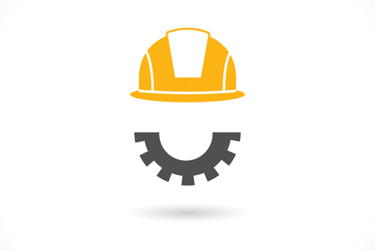The Unexpected Impact Of Payments Optimization On The Workforce Gap
By Ted Szmaj

Efficiency is the lever that can help remedy the problem of a shrinking workforce.
It’s one thing to read about the workforce gap facing the utilities sector. It’s another thing to experience it firsthand. As the controller of the Youngstown Water Department, I’ve watched my colleagues retire at an increasing rate — and I’ve felt the stress and strain of being understaffed. We found ourselves in the position of needing to both mitigate the loss of those retiring and to attract new talent. One of the most impactful interventions has also been one of the most unexpected: modernizing our payments software.
The Problem
Before we decided to upgrade our payments software, the Youngstown Water Department was like many legacy utility providers in this country. We were working with an outdated payment system, and a great deal of our more than 142,000 residents still received physical bills, meaning that our workers were opening hundreds of envelopes containing paper checks on any given day. And because enrolling in the paperless billing option we had at the time was a confusing task, many folks never opted in. Those who did opt in found the system difficult to navigate, meaning each bill demanded hours of our overextended workers’ attention as they fielded calls to address payment challenges.
And, of course, we also had an aging workforce and were facing the increased retirements that come with that. As more and more experienced staff members retired, our system’s inefficiencies became more pronounced — and the workloads for those still in the office only increased. It was clear we needed a change. We needed a solution that would remove the friction and stress of bill payments and the roadblocks to self-service enrollment — to lay the groundwork for increased cost efficiencies and a more sustainable workload for our team.
The Solution
Our search for that solution led us to InvoiceCloud, and we saw the results we’d been hoping for almost as soon as we flipped the switch. Within the first six months, paperless adoption increased six times over, saving us $70,000 in print and mail costs and dramatically reducing our carbon footprint by curtailing our paper consumption. Thanks to intelligent outbound campaigns reminding customers of upcoming bills, we also saw more timely payments, allowing us to reduce truck rolls for shutoffs by 42%. This nearly halved our drivers’ workload and helped more customers keep their water running — it even saved us on gas bills. It was truly transformative.
So what does all this have to do with the workforce gap? When we adopted a digital payments solution, we didn’t just save money and enhance our customers’ experience; we also saved 55 hours per month in manual workload. Tasks that previously required manual intervention, such as processing payments and managing billing inquiries, became automated. This has significantly reduced the amount of work on our employees’ plates, giving them time to focus on more critical — and interesting — projects, such as:
- Training on advanced metering infrastructure (AMI)
- Adoption and implementation of paperless work orders
- Paperless workflow for customer move-ins and move-outs
These improvements don’t just boost our operational efficiency; they modernize workflows across departments. We’re able to demonstrate that we prioritize innovation and foster an environment that supports professional growth and development. Our automated, streamlined processes are simple to explain to new hires, ensuring a quick and easy onboarding process so that our department can continue to operate without disruption (even as experienced staff members retire).
The Moral
At Youngstown Water, we knew we needed to upgrade our entire approach to billing and payments. We also recognized that we were experiencing a significant loss of experienced workers, which was expected to increase, and that attracting new talent was a challenge. But what we didn’t know — at least not at first — was that those two issues were related. Then we overhauled our payments system with InvoiceCloud. We made cataloging and tracking payments smoother for both us and our customers, of course. But we also mitigated the impacts of employee retirements on those still at the office as automation dramatically reduced their workloads. This alone may have saved us from losing other valued talent — after all, when you’re not wasting your time on the phone with stressed customers all day, you have a calmer work environment and more time to focus on interesting projects.
On top of all that, updating our billing process has created a smoother and more technologically advanced workflow that is more attractive to the next generation of prospective employees. Plus, the onboarding process has been cut in half thanks to our new automated workflows, so when we do secure those new hires, they’re up and running in no time.
The dreaded utilities workforce gap is here, and it’s likely only going to gain momentum. Our sector must prioritize attracting and hiring new talent, while also mitigating the departure of experienced workers. At Youngstown Water, modernizing how we send and receive bills has had an enormous impact on all our workdays — not to mention how vastly improved our customers’ experiences are.
 About The Author
About The Author
Ted Szmaj has been the controller and office manager for the water department of Youngstown, OH, for nearly a decade. Ted received his bachelor’s degree at Youngstown State University and has decades of experience in accounting and accounts receivable.
